Halloween’s Ghouls, Ghosts, and Tricky Treats Hark Back to Celtic Festival of Samhain
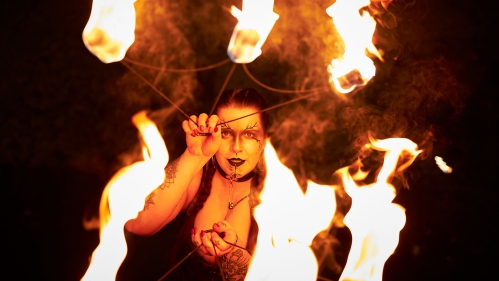
English professor notes ancient roots of All Hallows’ Eve began as way to mark end of summer
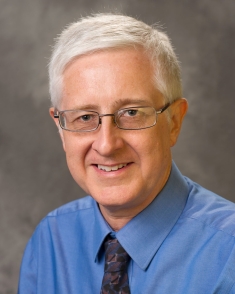
One of America’s most beloved holidays, Halloween, which celebrates ghouls and ghosts while illuminating the nation’s love-hate relationship with candy corn, is rooted in a pre-Christian, Celtic harvest festival brought to the United States by Irish immigrants in the 19th century.
According to Associate Professor of English William FitzGerald, Halloween’s Irish roots grew from one of the ancient holidays that helped the Celts mark the change of seasons.
The Celtic year travels from darkness to light. There are four seasonal festivals: Samhain, Beltane, Imbolg, and Lughnasa, representing the cycle of life, death, and rebirth. Samhain marks the beginning of harvest season and winter’s darkness.
William FitzGerald
Associate Professor of English
The feast of Samhain (pronounced SAH-win), which translates from Gaelic to “summer’s end,” was celebrated by pagans and Druids across Ireland and Britain. It was also acknowledged as a time when it was possible to commune with the dead because Samhain is, supposedly, when the “veil” between the worlds of the living and the dead thins, allowing ghosts, spirits, and demons to return to Earth. The departed were met with candles and bonfires to guide their wandering souls back to the afterlife. FitzGerald said this annual Irish remembrance of the dead was appropriated in the seventh century by the Catholic Church as All Saints’ Day (November 1) and, later, its extension into All Souls Day (November 2).
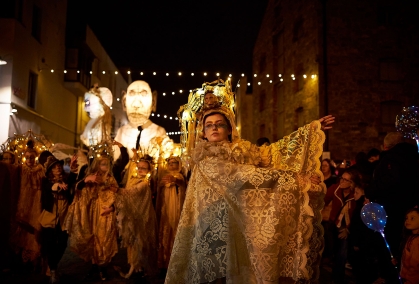
Today, Samhain is gaining long-overdue recognition as the parent of Halloween. The recent Netflix mystery series “Bodkin” features Samhain as a key plotline in the story of a relentlessly positive but darkly conflicted American true-crime podcaster. While in rural Ireland, the podcaster and his team try to unravel what happened to three residents of the village of Bodkin, who disappeared on the night of Samhain 25 years ago.
Bordering on the folk horror genre, Samhain celebrants wear elaborate disguises and costumes to confuse and ward off spirits. “Bodkin” shows this during a noisy fire and shadow parade intended to keep revelers safe from the spirits of the dead during the dark months ahead. Such parades, long-held across Ireland and Britain, are growing in popularity in America. Famously, the Halloween parade in New York City’s Greenwich Village dates back to 1974.

FitzGerald said his Irish family acknowledged Halloween’s Celtic origins. Growing up in the Kingsessing neighborhood of Philadelphia, FitzGerald’s relatives—and their mostly Irish neighbors—recognized Halloween was grounded in ancient ritual.
“I knew Halloween was an Irish tradition,” said FitzGerald. “However, in my parish, we were told that in the early days, people dressed up as their favorite saint rather than something more ghoulish. The nuns wanted all of us kids to appear saintly, even if just for one day.
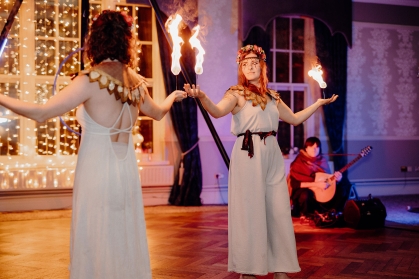
Samhain was darker than that. It was about the twilight world of the dead; the dying harvest and the dying light. But Americans turned that into fun. The ancient Celts’ tricks and treats were symbolic of survival. We seem to have lost that era’s mystery.
William FitzGerald
Associate Professor of English
FitzGerald noted that many cultures dedicate a day to “reuniting” with their dead and warding off evil spirits. “Mexicans celebrate Día de Los Muertos, the Day of the Dead, on November 1. On the eve of May Day, Germans celebrate Walpurgis Night by lighting bonfires in honor of the eighth century’s Saint Walpurga, who is revered for her protection against witches.
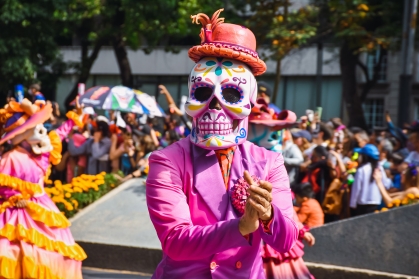
“Most of these festivals are a departure from the ordinary,” FitzGerald concluded. “They have cosmological significance and remind us that perhaps there is more to life than what we see. The changing seasons speak deeply to universal mystery and fantasy, and that is reflected in Samhain.”
The Samhain Origins of Halloween Traditions
According to the Library of Congress, these are some Samhain traditions that have been adopted by Americans:
- Carving pumpkins: The tradition of carving scary, candle-lit jack-o’-lanterns originated in Ireland, but the Irish used turnips instead of pumpkins to keep evil spirits away.
- Wearing costumes: To avoid being terrorized by evil spirits walking the Earth during Samhain, the Celts donned disguises to confuse them.
- Trick-or-treating: On Samhain, Celts would leave out food to appease spirits wandering at night. This evolved into dressing up as ghouls in exchange for food and drink.
- Mischief Night: The pre-Halloween tradition of Mischief Night was observed on the eve of Samhain and began as good-natured pranks. When Irish immigrants came to America, they brought with them this tradition of mischief.
- Candy corn: Celebrating the corn harvest was part of Samhain, but candy corn is wholly American. The Wunderle Candy Company in Philadelphia is credited with inventing the tri-colored treat in the 1880s. Candy corn did not become a Halloween sensation until the Goelitz Company mass-produced it in 1898.


